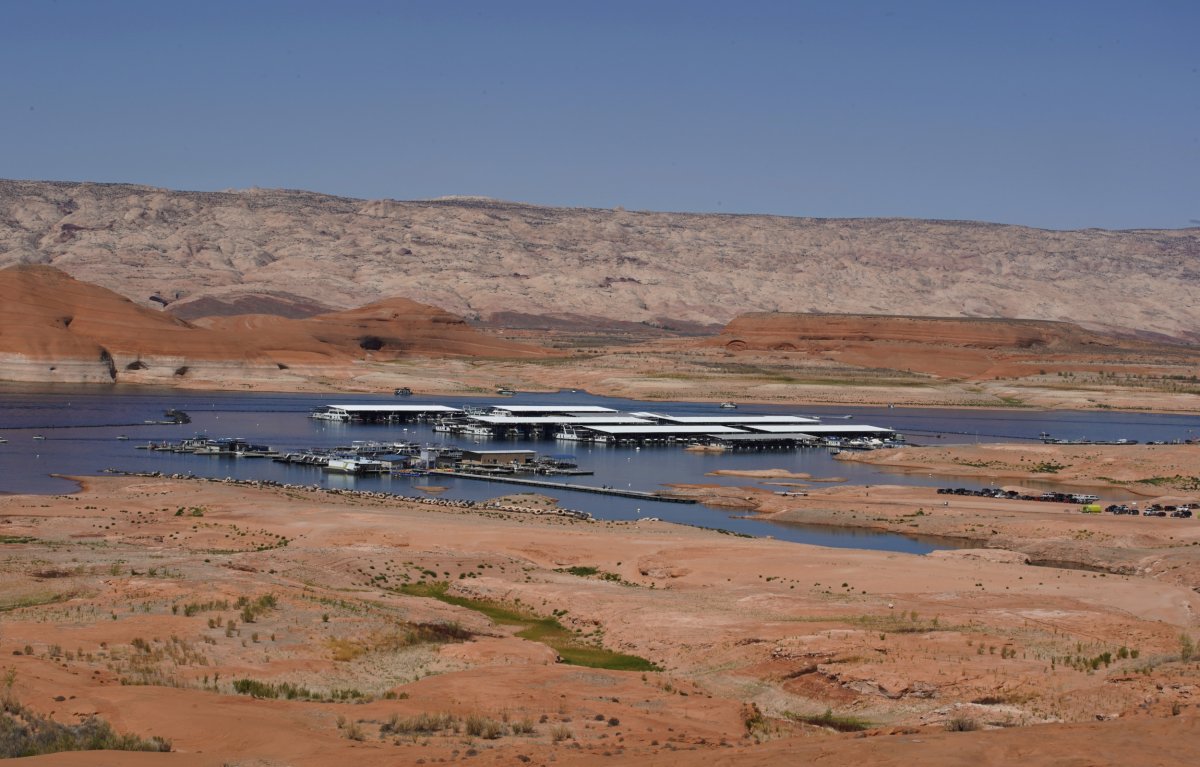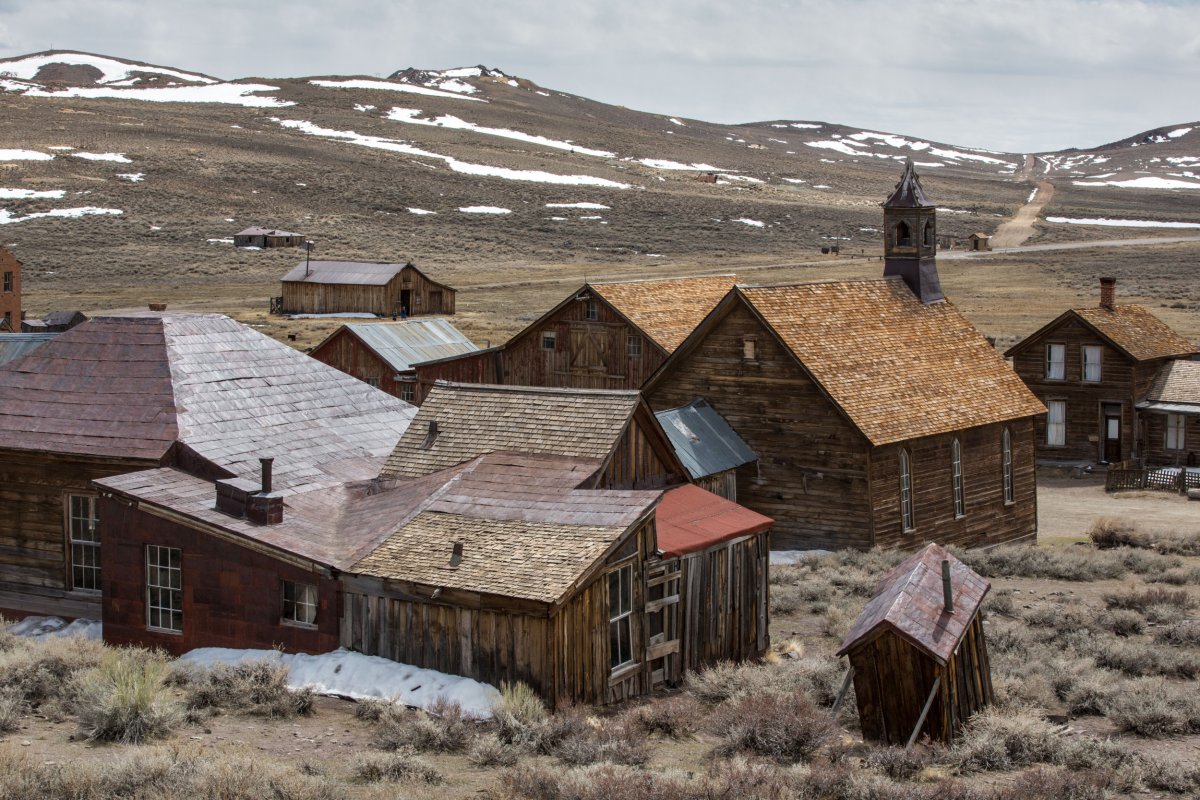A ghost town in Utah was discovered after a reservoir receded during a drought.
Water levels at the Rockport Reservoir, which park historians said was constructed in the 1950s, fell to just one-quarter of its total capacity, according to a news report by Salt Lake City-based KSL-TV. The article said that pieces of an old town are now visible.
Devon Dewey spoke with the news station about images he captured using a drone. He said there were faint traces of foundations of old homes and a road.
"The whole area is pretty flat and uniform, so even though the foundations are old and mostly gone, you can still see them clearly if you know where to look," Dewey said. "Using a drone to get a higher perspective helped to see where structures once stood over 70 years ago."
Dewey told Newsweek that a few friends knew about the uncovered ghost town and showed him some of their own photos. He went to see it for himself and was "amazed" at how it looked from the air and how many foundations he saw.
Log into Facebook to start sharing and connecting with your friends, family, and people you know.
"It was really cool to see it," Dewey said. "To think that this valley was the home to dozens of people and that their history is now usually hidden underwater. To see the water levels so low was not a good thing, but it was very interesting to see this history surface again."
European settlers first came to the area in 1860 and called the land Crandall, according to a piece put together by Utah State Parks. Within a year of their arrival, the settlement was renamed Enoch City.

Although the winters were harsh, many settlers chose to stay. Others left following the 1866 Black Hawk War, which involved several Native American tribes, Utah State Parks said. They went to live in another nearby settlement known as Wanship. The settlers who remained built a wall to serve as protection, and the settlement was renamed Rock Fort.
Following the end of the war, the wall was torn down and the material was used for other buildings and structures around the settlement. The name was then changed to Rockport.
Park historians wrote that Rockport maintained a small population through the years with 100 to 200 residents, but the population began to decline in the 1940s.
"In the 1950s, while 27 families were still living in the area, the government decided to build the Wanship Dam," historians wrote. "In 1952 the federal government bought all of the land in the area, which is now Rockport Reservoir."
The Bureau of Reclamation built the Wanship Dam between 1954 and 1957, and the valley where Rockport stood was flooded, creating the Rockport Reservoir.
"Before the area was flooded, some of the buildings were removed so that they could be preserved for history," historians wrote. "Those buildings are currently located at the Pioneer Village inside the Lagoon Amusement Park."
Rockport State Park Assistant Manager Charity Owens told Newsweek there have been some visitors who have stopped by just to see the remnants of the town.
"Utah has been in a drought for years, but Rockport Reservoir has still fluctuated a lot in the last several years depending on the snowpack the mountains get in the winter," Owens said.
She said the reservoir was full in the summer of 2019, but water levels did not rise as much in the spring because there was less snowpack and dry soil conditions.
Although the old town's foundations were partly seen in the past, Owens said it was surprising to see how much of the town emerged from the reservoir.
Updated 09/24/2021, 2:32 p.m. ET: This story has been updated to add comment from Rockport State Park Assistant Manager Charity Owens.

Uncommon Knowledge
Newsweek is committed to challenging conventional wisdom and finding connections in the search for common ground.
Newsweek is committed to challenging conventional wisdom and finding connections in the search for common ground.
About the writer
Catherine Ferris is a Newsweek reporter based in New York. Her focus is reporting for the U.S. Trends Team. She ... Read more
To read how Newsweek uses AI as a newsroom tool, Click here.








